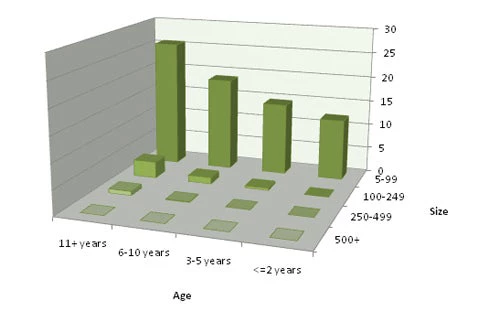Did the bailout of Chrysler by the U.S. government overturn bankruptcy law in the United States?
Almost two years ago, the outgoing Bush and incoming Obama administrations announced a series of steps to assist Chrysler, the struggling automaker, in an extraordinary intervention into private industry. The federal government intervened in Chrysler’s reorganization in a manner that, according to many analysts, subordinated the senior secured claims of Chrysler’s lenders to the unsecured claims of the auto union UAW. As one participant interpreted the intervention, the assets of retired Indiana policemen (which were invested in Chrysler’s secured debt) were given to retired Michigan autoworkers.
Critics claim that the bailout turned bankruptcy law upside down, and predicted that businesses would suffer an increase in their cost of debt as a result of the risk that organized labor might leap-frog them in bankruptcy. A long-standing principal of bankruptcy law requires that a debtor’s secured creditors be repaid, in full, before its unsecured creditors receive anything.
Some of the critics have included prominent financial experts such as Warren Buffett, who has stated that:
…the federal government’s actions in the bankruptcy can have “a whole lot of consequences for deal making…If we want to encourage lending in this country, we don‘t want to say to somebody who lends and gets a secured position that the secured position doesn‘t mean anything.”
And hedge fund manager George Schultze said that:
...lenders will have to figure out how to price this risk …. [Either] don’t lend money to a company with big legacy liabilities, or demand a much higher rate of interest because you may be leap-frogged in a bankruptcy.
Did the bailout of Chrysler have broad reaching consequences in the debt markets, as the critics have argued?
In a recent paper with my co-author Joe Warburton, we investigate the effects of the Chrysler bailout on the borrowing costs of companies. We examine the market for bonds of highly unionized companies, the financial market where any effect on borrowing costs would be most detectible.
Looking at a number of key dates around the bailout, we find no evidence of a negative reaction to the Chrysler bailout by bondholders of unionized firms. Our results suggest that the investors did not perceive a distortion of bankruptcy priorities in the Chrysler case.
In fact, contrary to the claims of the critics of the bailout, bondholders of unionized firms reacted positively to the Chrysler bailout. Unionized firms also generated greater returns over the period for their bondholders than non-unionized firms generated for their bondholders.
The chart below from the paper shows the yields on bonds of unionized and non-unionized companies over the period of the financial crisis. (Click on the chart to see a larger version of the image.)
This evidence suggests that bondholders interpreted the Chrysler bailout as a signal that the government will stand behind unionized firms. In other words, the Chrysler bailout created a perception that unionized companies will receive preferential treatment from the government. The results we find in this paper are consistent with the notion that too-big-to-fail government policies generate moral hazard in the credit markets.
The Chrysler bailout has generated an important debate among market participants and academics in bankruptcy and finance. My paper with Joe takes an empirical approach to some of the key questions, and I encourage the readers of this blog to take a look.
Further Reading
Anginer, Deniz and A. Joseph Warburton, “The Chrysler Effect: The Impact of the Chrysler Bailout on Borrowing Costs.”



Join the Conversation